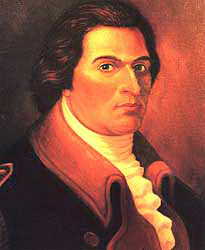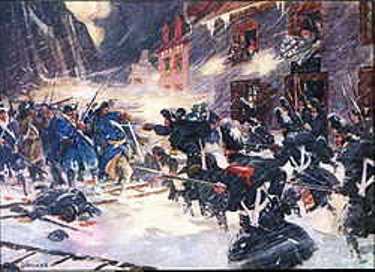FROM LEGHOWNEY TO NEW JERSEY
The stage but echoes back the public voice.
The drama’s laws the drama’s patrons give,
For
we that live to please, must please to live.
(Prologue spoken, by Samuel Johnson, at the opening of the
theatre in Drury Lane in 1747.)
One hundred and
ninety years later a new hall was opened in the north west corner of Ireland,
in Leghowney. Where is Leghowney? According
to a local publication it’s,“ A Townland
outside Donegal Town. Green hills and bumpy roads wind across it from Clogher
to Aughlim and on up the 'Whinney Lane'; the streets have no names but every
house is known - from Boyles' to Cassidy's, Hone's and a few other delightful
neighbours. The craic fills the air in Leghowney's local, thriving community
centre.”
Up to 1937 barns and schools were the only
venues for functions such as drama, dances and concerts, which was
the only entertainment at that time. At
the time house dances were also a very important part of the Local Community.
In every house there was an instrument: a fiddle, an accordion, mouth organ or
tin whistle.
The Free State government introduced the
House Dance Act of 1935 which banned dances , dancers and musicians. You had to
get a licence to hold a dance even in your own house. They came up with a moral
argument against dancing and ….if you don’t mind . . a sanitary facilities
argument. But as one commentator said, at the time, “the Government don’t care if you make your water down the chimney as
long as they get their money.” BUT A breach of the law could result in a
court appearance and penalty.
With a big
population of young people around the area and most of them were able to
entertain. It was talked about at these house parties that a hall should be
built in the Leghowney area.
A final decision
was taken at a meeting in Edward Traver’s Barn in January 1937 that a hall
would be built and a committee was set up, a site acquired in Aughlim in Ned
Gillespie’s field and for some unknown reason this site was not built on. The
location was to be changed to a field belonging to Edward Murphy.
Building work
started in June of 1937 and the famous Leghowney Hall was opened on the 11th of
November 1937. The site for the Hall cost 5 pounds and the structure of tin and
timber cost 400 pounds. The Leghowney Drama Group first came together in the Autumn
of 1937 to begin to learn and rehearse what was to be their first ever
production, a three act play ''Pike O' Callaghan'', by English playwright
Wybert Reeve. It was staged to a full house in the new hall on 28th December
1937.

Now, more than four score years later Leghowney
Dram Club, one of the longest established amateur drama groups in Ireland, is
bringing its production of a " Wake
in the West" to Cresskill, New Jersey on October 27th & 28th, to benefit The American Special Children's
Pilgrimage Group (ASCPG). Leghowney
Drama has survived recessions, emigration & other social challenges, All actors are drawn from the local community
and their dedication and commitment are rewarded with packed houses at
every performance. A Wake
in the West, comedy written by
Mulranny man Michael Joe Ginnelly has been playing to full houses at home. When
I contacted the playwright he humbly told me , “I'm a small farmer, three quarters of a century old, hanging on here
by my finger nails, trying to keep the old homestead going. I don't regard myself as a writer, just a
scribbler really, don't even bother to try and get published. How 'The Wake'
has been such a success is a mystery to me as I only wrote it for the local area.
At the time funeral homes were springing up all over the place and I was
afeared young people might not know what went on at wakes especially if it were
an elderly person. I have written other plays, all comedies. Couldn't write a
serious line to save my life, the way I'm wired up I suppose.”
I don’t know how
Michael Joe was wired but even if he was wired by a plumber his “Wake” is
literally sweeping the boards nationwide.
At about the same time as the Leghowney Drama Group was set
up, the late Anew McMaster said: "The
preservation of the theatre has passed from the hands of the professional to
the amateur." One need not look further than Leghowney (or New Jersey!) to see how true this is.
80 years ago Leghowney Hall was little more than a
corrugated shed with only gas lighting and oil lamps to read the scripts.
Heating was scarce with just a little solid fuel stove to provide some warmth.
BLESSINGTON IS TWINNED WITH O’NEILL CITY
John O’Neill was
born in Drumgallon, Co. Monaghan, on the 9th of March 1834 to John and Mary
O'Neill. His father died of scarlet fever,
six weeks before young John was born.
His mother, unable to eke out a living in Ireland and
fearful for her children's survival, emigrated to the United States in the
latter part of 1835 with two of her children and settled in Elizabeth, New
Jersey. John stayed behind with his grandfather, In December of 1848, at age 14, John left
Ireland to join his mother and siblings in the United States where he completed
his formal education. His first job was
with a Catholic publishing company as a sales representative and a number of years on the road he settled
in Richmond Virginia, where in 1855 he
opened a bookstore.
He joined the local branch of the Emmet Monument Association
the aim of which was to provide military
training to young men who would use
their training to rid Ireland of English
rule.
In 1857 he sold the bookstore and enlisted in the Second United States Dragoons but
disillusioned with the lack of action, O'Neill went AWOL and headed west to San
Francisco where he spent the next few years.
While living there O'Neill met his future wife Mary Ann Crowe, an Australian of Irish parents. In 1859,
having second thoughts about his desertion from the Dragons he turned himself
in and, fortunately for him, was returned to duty without trial.
At the onset of the Civil War in 1861, he was stationed in
San Francisco with the 1st United States Cavalry, formerly the Second United
States Dragoons. He returned to the east
coast with his regiment who had volunteered for action in the Union Army. In
March through July of 1862 the regiment was engaged in the battles of the
Peninsular Campaign launched by the Union army in an attempt to circumvent the
Confederate Army in northern Virginia and capture Richmond the Confederate
Capital. On June 27, at the battle of
Caines Mill, O'Neill was promoted from
sergeant to the rank of second lieutenant for gallantry He volunteered for service in the Union Army
and served as an officer in numerous regiments during the Civil War.

This veteran of the
American Civil War had the rank of
"general," bestowed on
him by admirers because he commanded three Fenian incursions into
British-governed Canada, first directed colonists in 1874 to this fertile
Elkhorn Valley site which bears his name. General O'Neill also induced other
Irish groups to settle at Atkinson in Holt County and in Greeley County.
Knowing the agricultural heritage of his people, he said his object in founding Nebraska
colonies was "to encourage poor people in getting away from the
overcrowded cities of the East."
The Irish were a
major immigrant group contributing to the settlement of Nebraska. Speaking the
English language, they blended into the population and were found in many
communities. However, due to ancient animosities with Britain, some of them
colonized in America. Foremost colony in this state is O'Neill, proclaimed the
Irish Capital of Nebraska by the Governor in 1969.
O'Neill's real historical significance arises
from his service, beginning in 1866, with the Fenian Organization, whose stated
goal was to create and support an Irish state independent from British rule. In
1876, O'Neill summarized his feelings with the following statement: "I
have always believed in striking at England wherever we could reach her, and
wherever the English flag floats and the English government is recognized and
there are English soldiers in arms to defend the flag and maintain the
government I hold that the Irish people, particularly the Irish Exiles whom her
oppressive laws have driven from their native land, have a right to go there
and make war on England."
On June 1, 1866,
O'Neill led a Fenian invasion of Canada with the goal of using occupied
territory as a bargaining point for Irish freedom. The invasions would
ultimately fail to achieve their stated goals and O'Neill was arrested by
United States Marshalls upon returning to the United States.
John O'Neill, the boy from Drumgallon, led the establishment of Irish
"colonies" within the United States. The first Irish colony in
Nebraska was set up in Holt County in the town that bears his name today -
O'Neill City, Nebraska. O'Neill died on
January 8, 1878, and was buried in Omaha, Nebraska.
On October 28,
1919, the O'Neill gravesite monument was dedicated with an address by E.H.
Whelan. Present for the unveiling was Eamon de Valera, President of the
Republic of Ireland. On this day, the following inscription on the monument was
presented:
Gen. John O'Neill
Hero of Ridgeway
Born in Ireland
March 9, 1843
Died at Omaha
January 8, 1878
By nature a brave man.
By principle a soldier of
liberty he fought with
distinction for his adopted
country and was ever ready
to draw his sword for his
native land.
To perpetuate his memory
this monument was erected
by the Irish nationalists.
God save Ireland.
 |
| O’Neill City is now being twinned with Blessington where his descendent , Wicklow County Councillor, Gerard O ‘Neill now lives. |
JOHN MORIARTY
John Moriarty was a
Kerry man on whom it would be difficult
to put a label. Poet Paul Durkin described
this man of many parts as, “ . .
. Ireland’s most outstanding
philosopher-theologian since Bishop Berkeley in the eighteenth century.” Another writer described him as, “A
missionary in the tradition of the early Irish monks.”
John, whom many
described as a mystic, was born in North Kerry in 1938 and educated at Listowel
and University College Dublin. He taught English Literature at the University
of Manitoba in Canada for six years, and returned to Ireland in 1971.

Eist has now
brought out a 4 CD set of John’s talks
Celtic Spirituality in which he
explains, in layman’s language what he calls “other dimensions of
reality.” Several times in the course of those talks he reminds of how we tend
to ignore our spiritual side. He
emphasizes how unfortunate it is that, “
Our eyes become economic brain tumours.”
In this series of talks, which
were recorded in Glendalough, brings the listener on a spiritual journey in which the north Kerry habit of describing
a woman as ,”a fine mare” is linked to the Hindu approach to the female. An inebriated Gaelic speaker, in Conemara, who
couldn’t pronounce “W” in English, lost his bearings one dark night and asked
John, “Fare the f*ck are we”? What other theologian could use that story to
illustrate how we are losing our way spiritually? Even
the sentence structure of the Healy-Rayes
is worked into the mix. This CD set is a must.
Details of Celtic
Spirituality can be found at www.eist.ie also a list of recordings of talks, made by
Eist, at the World Meeting of Families in the RDS in August.
See you in November.
























